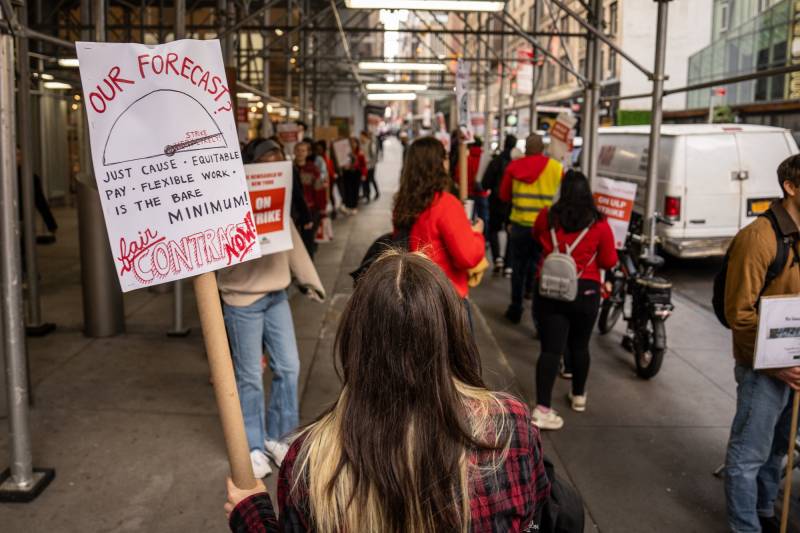“The needle is a huge data load, it’s more brittle [than results pages], and we’ve only published it a handful of times (v 1000s of results pages),” Cohn wrote on X. “There will be bugs and it could be hard to debug.”
He said it could run smoothly, allowing the needles to publish like normal, but added, “There are good reasons to bet against it.” Any bugs will make it likely that the New York Times won’t turn the needles live, given the tech workers strike.
Members of the NYT Tech Guild walked off the job on Monday, about two years into unsuccessful negotiations between union leaders and management on a contract for the employees, according to Axios. They’re alleging unfair labor practices and asking for higher wages as part of the deal.
The strategically timed strike comes about two months after the guild, which represents about 600 data analysts, software engineers and designers, authorized a plan to halt work this week.
Regardless of whether the needle appears online, the New York Times has assured readers it plans to periodically run the prediction model internally and release written updates on its live blog, reflecting what the needle indicates.
Some voters are calling the tool essential to avoid casting doubt on results as they come in.
“Will be a lot of misinformation in the absence of a needle,” @SpencerHakimian replied below Cohn’s thread.
Others are urging fellow stressed-out voters to avoid content based on the NYT’s data — including the potential makeshift needle-based updates — to avoid crossing the virtual picket line.
“Don’t cross the picket line and look at the @nytimes needle (or the narrative version of the needle if they can’t get it to work),” @Handle4Adam wrote.
Tech Guild members outside the NYT’s office on Tuesday are pointing out exactly which functions can’t run without them — and hoping the absence of the elections needle could move the needle on negotiations.
“If you want a needle, we need a deal!” signs on the picket line read.

